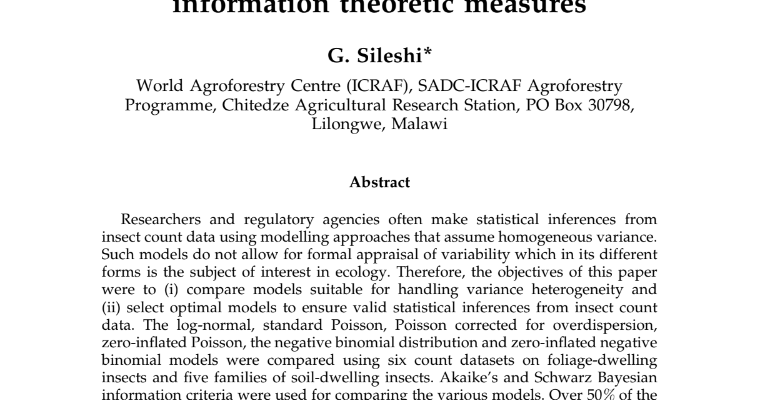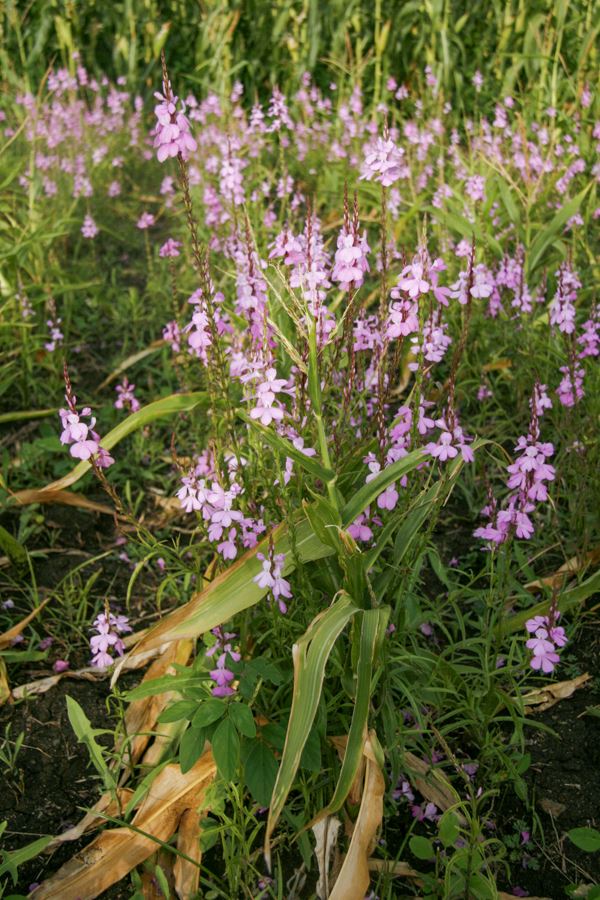Researchers and regulatory agencies often make statistical inferences from insect count data using modelling approaches that assume homogeneous variance. Such models do not allow for formal appraisal of variability which in its different forms is the subject of interest in ecology. Therefore, the objectives of this paper were to (i) compare models suitable for handling variance heterogeneity and (ii) select optimal models to ensure valid statistical inferences from insect count data. The log-normal, standard Poisson, Poisson corrected for overdispersion, zero inflated Poisson, the negative binomial distribution and zero-inflated negative binomial models were compared using six count datasets on foliage-dwelling insects and five families of soil-dwelling insects. Akaike’s and Schwarz Bayesian information criteria were used for comparing the various models. Over 50% of the counts were zeros even in locally abundant species such as Ootheca bennigseni Weise, Mesoplatys ochroptera Sta ̊l and Diaecoderus spp. The Poisson model after correction for overdispersion and the standard negative binomial distribution model provided better description of the probability distribution of seven out of the 11 insects than the log-normal, standard Poisson, zero-inflated Poisson or zero- inflated negative binomial models. It is concluded that excess zeros and variance heterogeneity are common data phenomena in insect counts. If not properly modelled, these properties can invalidate the normal distribution assumptions resulting in biased estimation of ecological effects and jeopardizing the integrity of the scientific inferences. Therefore, it is recommended that statistical models appropriate for handling these data properties be selected using objective criteria to ensure efficient statistical inference.
Authors: Gudeta Sileshi
Contact address: sileshigw@gmail.com
Institution: Addis Ababa University, Department of Plant Biology and Biodiversity Management
Twitter name of the institution: @AddisUniversity
Twitter link: https://x.com/AddisUniversity
Available downloads:


